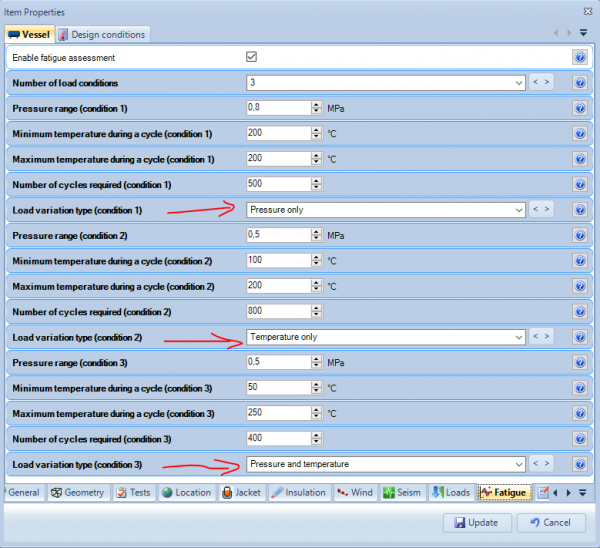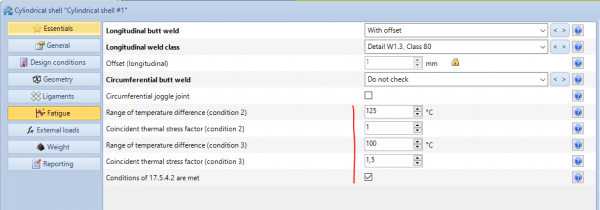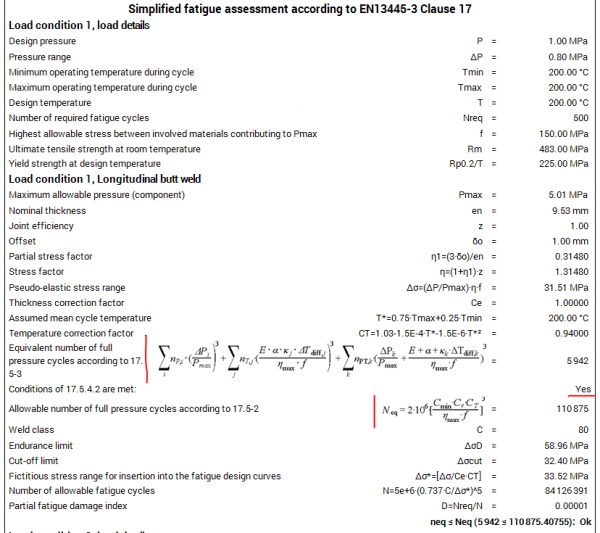Updates to simplified fatigue assessment in Clause 17 according to EN 13445-3 2014, Amendment 5
Amendment 5 to EN 13445-3 introduces important changes regarding the simplified fatigue calculation, performed according to Clause 17. Essentially, these changes concern new ways to consider thermal stresses in fatigue calculation. Load cases can now have pressure variation only, temperature variation only or a combination of both.
In the general settings for fatigue cases (File> Item Properties> Fatigue) a new option is now available for each fatigue case, allowing you to choose which type of stress corresponds to each case.
When a fatigue detail is set (welded or unwelded) under Fatigue category for a component, new values are requested only for those cases involving temperature variations. This values are the local range of temperature variation ΔTdiff and the coincident thermal stress factor κ. This value can be set according to Table 17-2.
From now on, when NextGen runs the fatigue calculation, it'll use new equations for the determination of both number of equivalent full pressure cycles and allowable fatigue cycles, since conditions of 17.5.4.2 are set as met.
Of course, for cases of simple pressure oscillation everything remains as before: if in the general settings of the fatigue calculation one or more combinations are present and all are set to "pressure only" as the type of variation, the calculation is carried out according pre-Amendment 5 rules.
Search the documentation
Customer area
Categories
Articles in this category
- Weight management
- Wind load definition
- External actions for the vessel support calculation
- Period of vibration of items supported by brackets or rings
- Run a FEM analysis of a nozzle with NozzlePRO from NextGen
- How to validate an attachment (nozzle or support) according to WRC 107, WRC 537 o WRC 297
- Version 2019.3, WRC module updates
- Use of customized Excel files to define the WRC loads on nozzles
- Local loads transformation
- Simplified fatigue assessment according to EN13445-3 Clause 17 and AD 2000 S 1
- Detailed fatigue assessment according to EN 13445-3 Clause 18 and AD 2000 S 2
- Erection of vertical vessels
- Updates to simplified fatigue assessment in Clause 17 according to EN 13445-3 2014, Amendment 5
- Considerations on the verification of saddles according to the Zick method
- ASME Code Case 2901, Division 1 UG-44(b) and Division 2 4.16.12
- Bolt torque calculation for flanges
- Structural calculation of supports using load combinations
- Calculation of foundation loads for saddle-supported vessels using simplified finite element analysis



